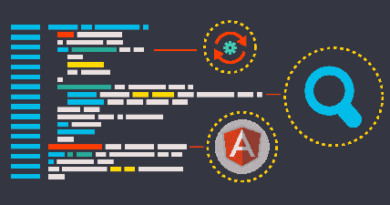Efficient MATLAB Programming Techniques for Data Analysis And Visualization
Introduction: MATLAB is a powerful tool used for data analysis and visualization in various fields such as engineering, science, economics, and finance. However, the process of writing efficient and effective MATLAB code for data analysis and visualization can be challenging. In this blog, we will provide you with some tips and techniques for writing efficient MATLAB assignment Help code for data analysis and visualization.
Tip 1: Pre-processing Data
Pre-processing the Data before starting with the data analysis and visualization process, it is essential to pre-process the data. Pre-processing refers to the process of cleaning and transforming the data to prepare it for analysis. This process involves removing any missing or irrelevant data, normalizing the data, and converting it into a suitable format.
Tip 2: Use Vectored Operations
Vectored operations are the most efficient way to perform mathematical operations in MATLAB. Vectored operations allow you to perform the same operation on multiple elements of a matrix or an array simultaneously. This technique reduces the number of loops required to perform the same operation and therefore reduces the processing time.
Tip 3: Use Built-in Functions
MATLAB provides a wide range of built-in functions that can be used for data analysis and visualization. These functions are optimized for performance and can significantly reduce the processing time. It is essential to explore the built-in functions provided by MATLAB before writing any custom functions.
Tip 4: Use Logical Indexing
Logical indexing is a powerful technique used for data selection and manipulation. This technique involves using a logical expression to select specific elements of a matrix or an array. Logical indexing can be used to perform complex operations on the data efficiently.
Tip 5: Use Parallel Computing
Parallel computing is a technique used to divide a complex problem into smaller sub-problems that can be solved simultaneously on different processors or cores. MATLAB provides a Parallel Computing Toolbox that can be used to perform parallel computations. This technique can significantly reduce the processing time for large data sets.
Tip 6: Use Visualization Techniques
Visualization is a crucial part of data analysis. It allows you to explore the data visually and identify any patterns or trends. MATLAB provides a wide range of visualization techniques, such as scatter plots, histograms, and heat maps that can be used to visualize the data. It is essential to choose the appropriate visualization technique based on the type of data and the analysis required.
Tip 7: Use Custom Functions
Although MATLAB provides a wide range of built-in functions, it may be necessary to write custom functions for specific data analysis and visualization tasks. When writing custom functions, it is essential to optimize the code for performance. This can be achieved by using vectored operations, logical indexing, and other techniques discussed in this blog.
Tip 8: Memory Management
Memory management is a crucial aspect of writing efficient MATLAB code. It is essential to minimize the memory usage of the code to avoid any memory-related issues, such as out-of-memory errors. This can be achieved by reallocating arrays and matrices, avoiding unnecessary variables, and releasing memory when it is no longer required.
Tip 9: Profiling Tools
Profiling tools are used to identify the performance bottlenecks in the code. MATLAB provides a built-in profiling tool called the Profiler, which can be used to identify the slowest parts of the code. Once the performance bottlenecks are identified, the code can be optimized using the techniques discussed in this blog.
Tip 10: Test the Code
Testing the code is an essential part of the development process for assignment help. It allows you to identify any errors or bugs in the code and ensure that the code works as expected. MATLAB provides a built-in testing framework that can be used to test the code. It is essential to test the code thoroughly before deploying it in a production environment.
Conclusion
In conclusion, writing efficient MATLAB assignment help code for data analysis and visualization requires a combination of techniques, such as vectored operations, built-in functions, logical indexing, memory management, and visualization techniques. It is essential to optimize the code for performance and memory usage to reduce the processing time and avoid any memory-related issues. By following the tips and techniques provided in this blog, you can write efficient and effective MATLAB code for data analysis and visualization.


